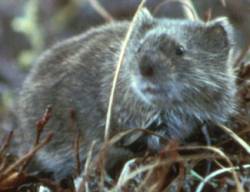| Alexandromys | |
|---|---|
 | |
| Tundra vole, (Alexandromys oeconomus) | |
| Scientific classification | |
| Kingdom: | Animalia |
| Phylum: | Chordata |
| Class: | Mammalia |
| Order: | Rodentia |
| Family: | Cricetidae |
| Subfamily: | Arvicolinae |
| Tribe: | Microtini |
| Genus: | Alexandromys Ognev, 1914 |
| Type species | |
| Microtus pelliceus [1] | |
| Species | |
Alexandromys alpinus | |
Alexandromys is a genus of voles in the subfamily Arvicolinae, formerly a subgenus of the genus Microtus . [2] Species in this genus are:
- Alpine vole (Alexandromys alpinus) split off from A. mongolicus [3]
- Evorsk vole (Alexandromys evoronensis)
- Reed vole (Alexandromys fortis)
- Taiwan vole (Alexandromys kikuchii)
- Lacustrine vole (Alexandromys limnophilus)
- Maximowicz's vole (Alexandromys maximowiczii)
- Middendorff's vole (Alexandromys middendorffi)
- Mongolian vole (Alexandromys mongolicus)
- Japanese grass vole (Alexandromys montebelli)
- Muya Valley vole (Alexandromys mujanensis)
- Tundra vole or root vole (Alexandromys oeconomus)
- Sakhalin vole (Alexandromys sachalinensis)
- Shantar vole (Alexandromys shantaricus) split off from A. maximowiczii [4]







